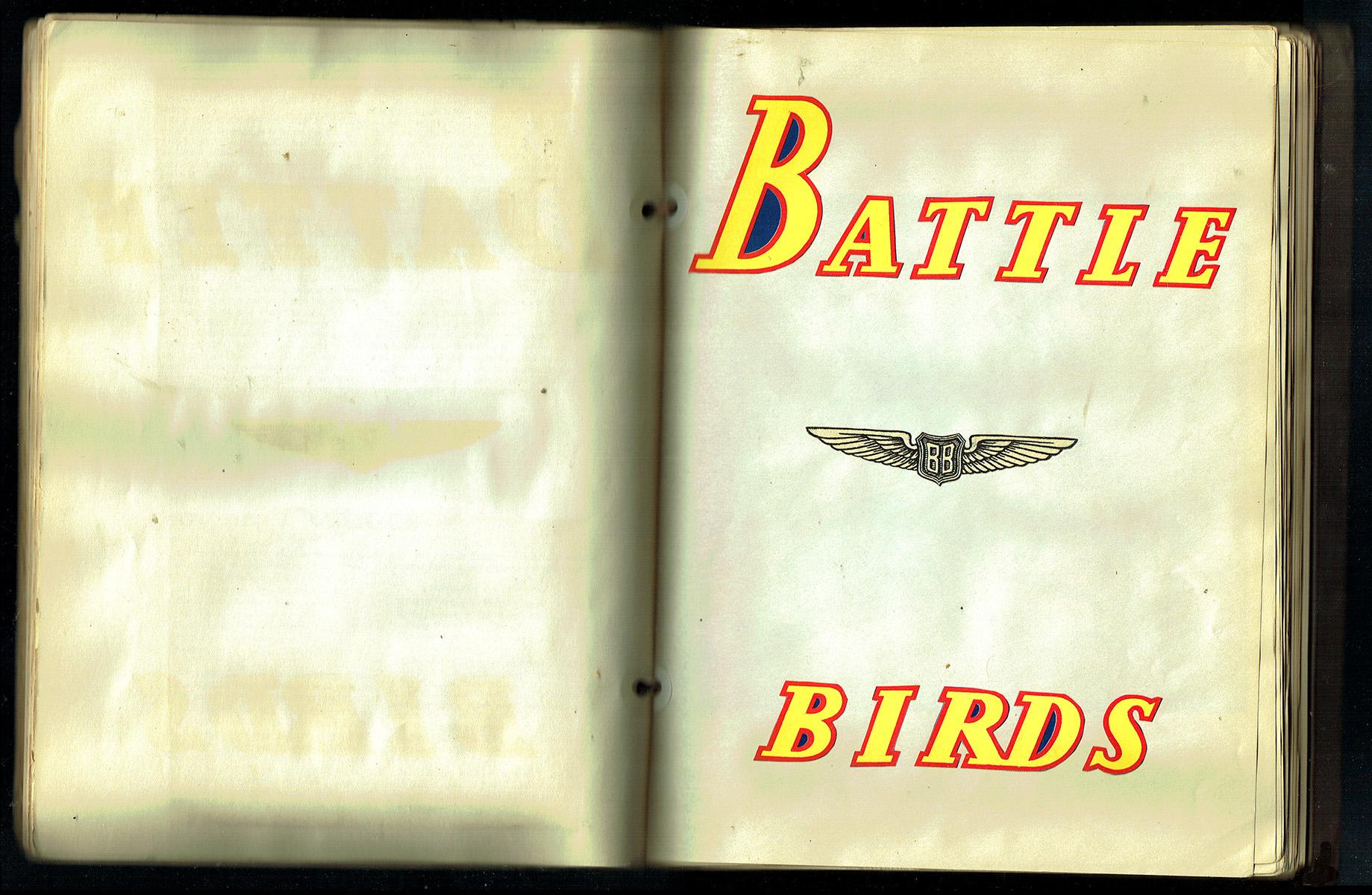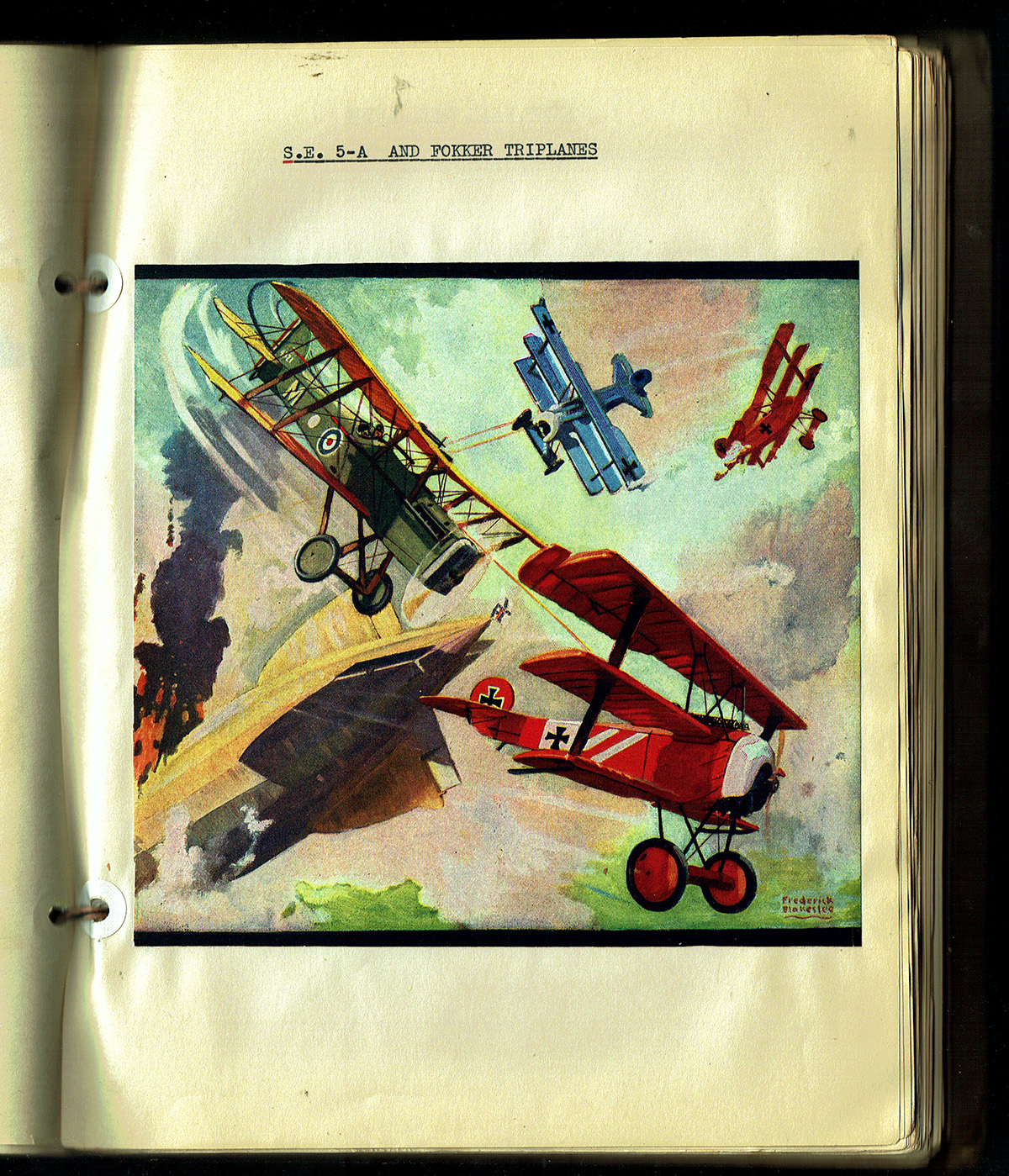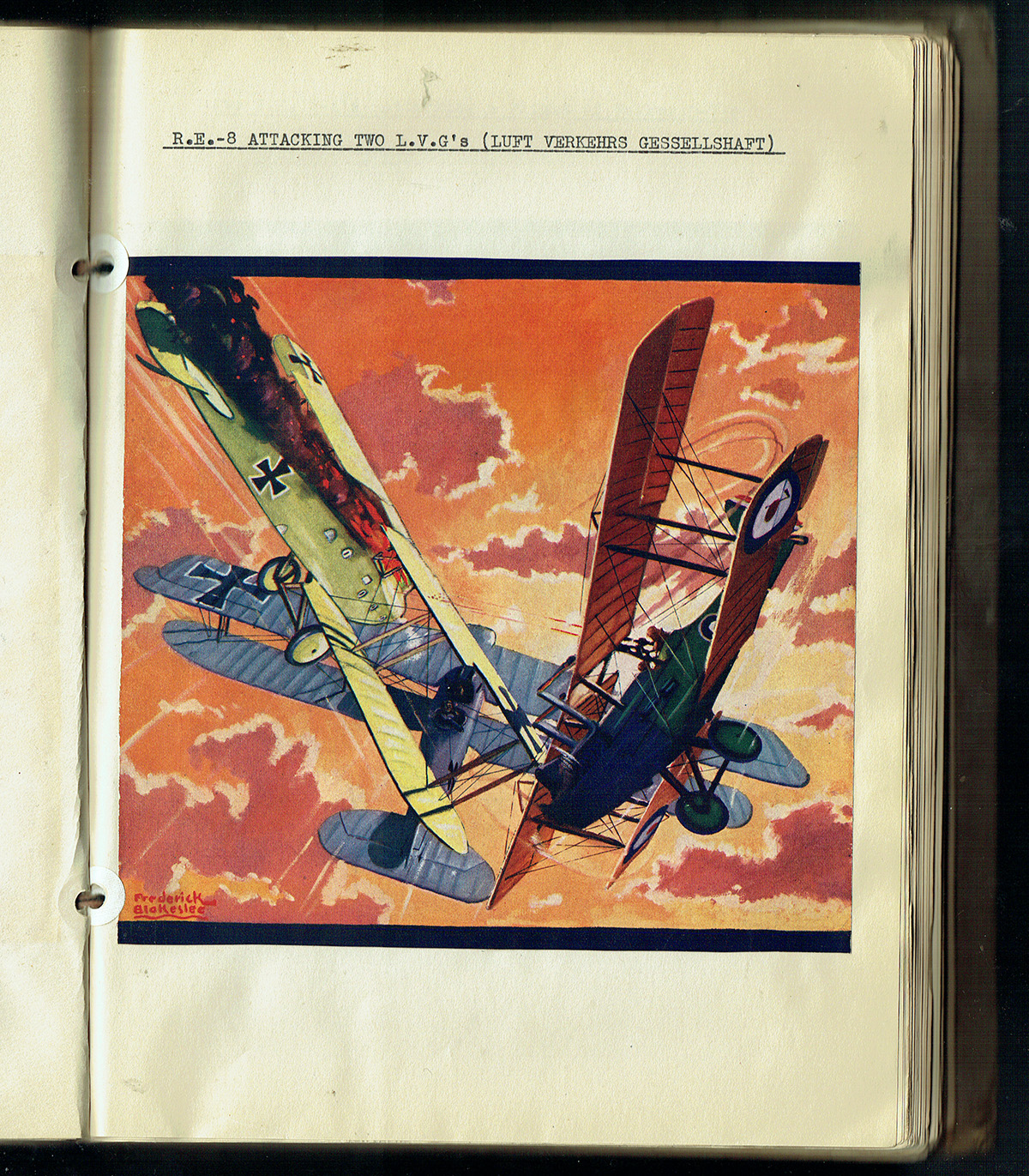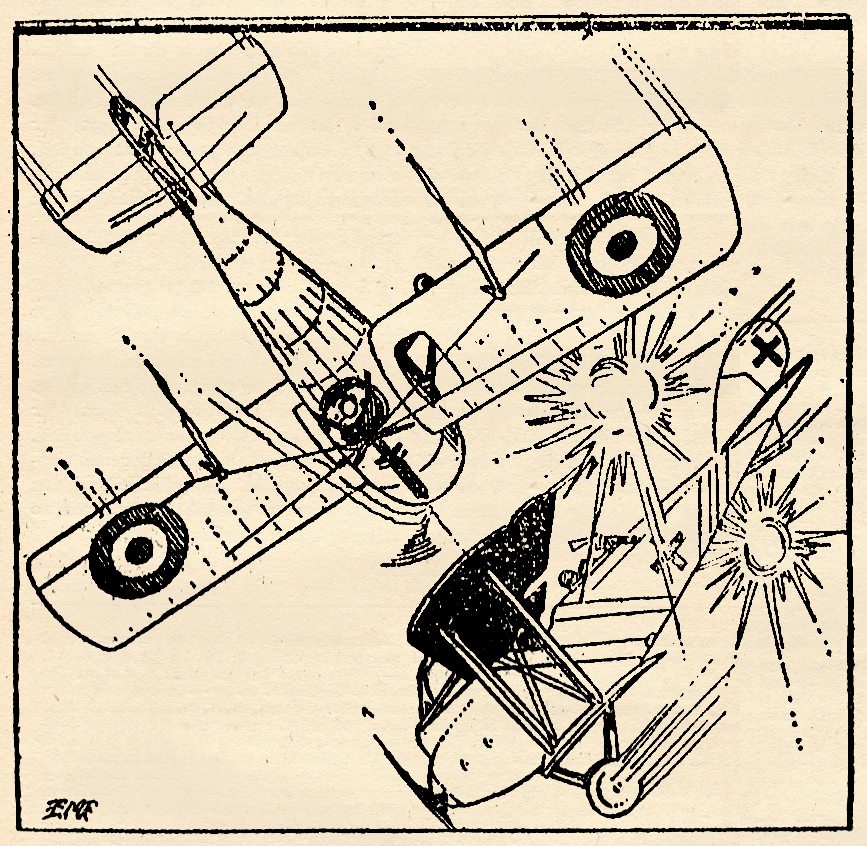Editor’s Note: This month’s cover is the sixteenth of the actual war-combat pictures which Mr. Blakeslee, well-known artist and authority on aircraft, is painting exclusively for BATTLE ACES. The series was started to give our readers authentic pictures of war planes in color. It also enables you to follow famous airmen on many of their amazing adventures and feel the same thrills of battle they felt.
 AN AMERICAN observation group was assigned a very important photographic mission. The objective was far in German territory and heavily guarded both by airplanes and anti-aircraft. Heretofore although several attempts had been made to photograph the position, all had failed. It had been decided, therefore, as a last chance, to send several observation ships, with a huge group of pursuit planes as protection. It was hoped that with this strong-force, one ship at least would be able to go through with the work.
AN AMERICAN observation group was assigned a very important photographic mission. The objective was far in German territory and heavily guarded both by airplanes and anti-aircraft. Heretofore although several attempts had been made to photograph the position, all had failed. It had been decided, therefore, as a last chance, to send several observation ships, with a huge group of pursuit planes as protection. It was hoped that with this strong-force, one ship at least would be able to go through with the work.
As a matter of fact only one ship, of the twenty-seven that took the air, arrived over the objective.
How six of the observation ships dropped out and how they missed their top protection at the rendezvous, is another story. Suffice it to say that only three of the photographic ships, which were brand-new R.E.8’s, reached the rendezvous; when they did not see the fighting group, they separated and started alone into Germany, for they carried only enough gas to get them there and back and so could not wait. Two of the three were forced to return by strong Boche patrols. One ship was left. Let us follow him into Germany.
The pilot of this ship was not sorry to be alone, for in all the previous attempts there had been eight or nine planes and Lt. Reed felt confident that where many ships had failed, one might do the trick. He flew as high as he could and arrived over his objective unchallenged. On the ground the Germans had observed the lone flyer, but as it was a mere dot in the sky and only one where they had been looking for many, the observers were puzzled. They could not determine whether it was one of their own ships or not. Soon it began to spiral down, but since there was a German airdrome in the neighborhood this was not unusual. It was only when Lt. Reed came within view of the binoculars which were trained on him, that he was recognized as an Allied plane.
Reed came down faster than the gunners could adjust their fuses and in a minute he was at the desired level. He flattened out so that his observer was able to calmly click his camera. While he was thus employed the anti-aircraft suddenly became quiet. No wonder, for eighteen Boche fighting ships were diving on this dauntless American.
He was surrounded in a second by a milling crowd of roaring planes. Almost instantly he was out of action, with his observer seriously wounded and his own legs shot through. The storm of lead stopped as suddenly as it had come. Here was a prize—an R.E.8, a machine the Germans badly wanted intact. The Germans saw that the American was helpless, so they surrounded him in a boxlike formation and headed him toward G.H.Q., or so Lt. Reed supposed.
They had not gone far when two L.V.G.’s took up a position on either side of him, and the rest flew away. Lt. Reed was growing weak from loss of blood. He knew that he could never escape in his condition, for aside from being faint he found that his legs were stiffening so that it was barely possible to steer. He was headed into Germany, so he supposed, and could never be able to turn his ship.
Suddenly the ship on his left dove; at the same moment the L.V.G. on his right burst into flames. Then an S.E.5 with British insignias flashed in front of Lt. Reed, to hurtle down at the other Boche. The next instant Reed found himself flying alone again.
The action had revived him somewhat, but when he tried to turn toward France he found his legs were useless. He could do nothing but fly straight on. He was headed toward the south and had been all along, though he had been unaware of it. Believing that he was going deeper into Germany he flew on until he grew blind from faintness. Then he landed and learned that he was in France. He asked to have his observer and photographs looked after and collapsed.
For their devotion to duty both the observer and the pilot received a high award.

The Luft Verkehrs Gesellschaft, better known as the L.V.G., G.V., was a well-known fighter. It was a two-seater biplane, carrying one Spandau on the right of the motor and firing through the propeller, and one Parabellum gun fired from the observer’s seat. There were several types of L.V.G.’s. One was a C.IV, an improvement over the C.V. Another was a single-seater scout, the D.VI, produced toward the end of the war. It was a queer looking ship. A third was also weird in appearance and called the D.V., a single seater. A big brother to the L.V.G. family was a twin-engined tractor triplane. The cream of the lot however was a little single-seater scout of the D class, one of the speediest looking ships ever made. The span of the L.V.G., C.V. was 44′-8½”; overall length, 42′-2½”, with a speed of 150 km. per hour at 4,000 meters.

“Lt. Reed and the L.V.G.” by Frederick M. Blakeslee (September 1932)
 Like many in the late 20’s and early 30’s, Robert O’Neil was fascinated with aviation and as such, a large part of both volumes of his scrapbooks is taken up with a cataloging of the many different types of planes. In addition to Flying Aces’ “War Planes Album” and Sky Birds’ “Model Planes of All Nations”, Robert also featured Frederick Blakeslee’s magnificent Battle Aces covers.
Like many in the late 20’s and early 30’s, Robert O’Neil was fascinated with aviation and as such, a large part of both volumes of his scrapbooks is taken up with a cataloging of the many different types of planes. In addition to Flying Aces’ “War Planes Album” and Sky Birds’ “Model Planes of All Nations”, Robert also featured Frederick Blakeslee’s magnificent Battle Aces covers.

























